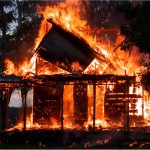In the well-known case of Sandhu v. Wellington Place Apartments, the jury awarded to the plaintiff non-pecuniary general damages of $311,000. This is the current value of the $100,000 maximum award established by the Supreme Court of Canada in the 1970’s. The jury also awarded damages for income loss in the amount of $1,166,283 and $10,942,908.00 for the cost of future care.
The defendants asked the trial judge, Madam Justice Carolyn Horkins, to strike several parts of the jury’s decision. In relation to the non-pecuniary damages, they argued that “[the plaintiff’s] future care award will improve the quality of his life and for this reason the defendants say that he no longer qualifies as one of the worst cases entitled to receive the maximum amount for non-pecuniary damages”. Justice Horkins rejected the argument as “unsupportable”, saying that “[t]he defendants’ position suggests that only a plaintiff who is in a vegetative state and unaware of the care provided would qualify for the upper limit. Everyone else would be able to appreciate and enjoy the benefit of the future care award and according to the defendants should receive something less.”


 In
In  Although he expressed concern about “the somewhat rigid state of the existing jurisprudence”, Justice Denis Power refused to bifurcate the trial of a motor vehicle accident case.
Although he expressed concern about “the somewhat rigid state of the existing jurisprudence”, Justice Denis Power refused to bifurcate the trial of a motor vehicle accident case. The Court of Appeal today released its decision in
The Court of Appeal today released its decision in  In
In